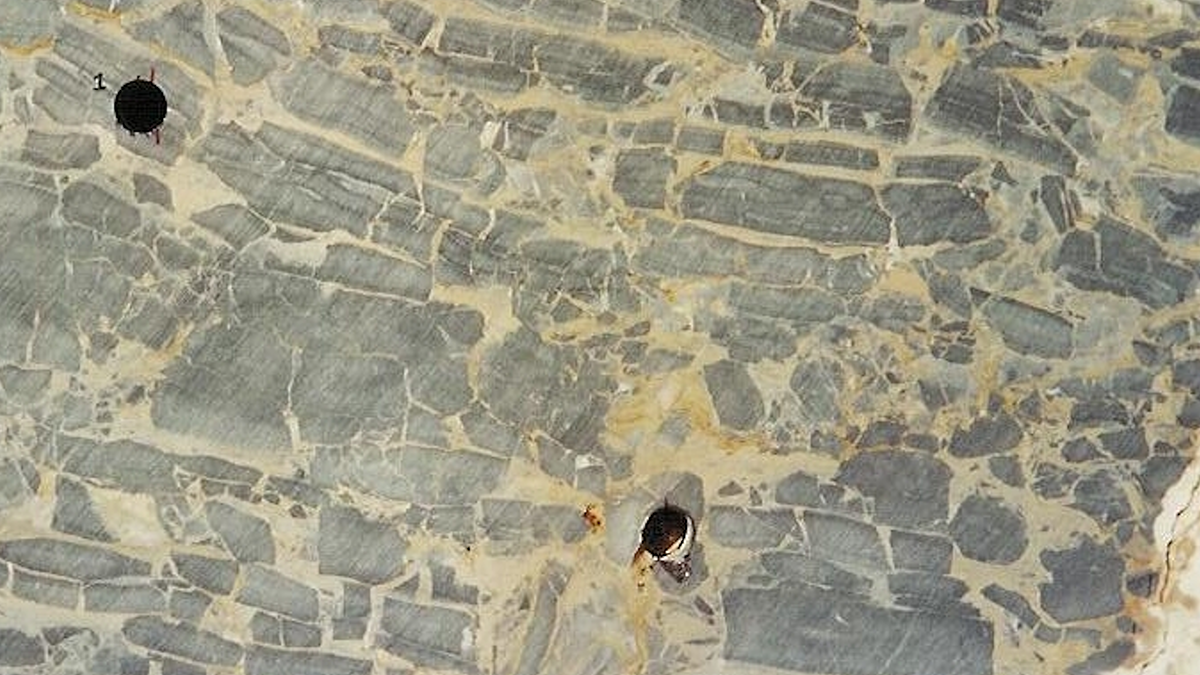Editors’ Highlights are summaries of recent papers by AGU’s journal editors.
Source: Journal of Geophysical Research: Solid Earth
During the late Ediacaran period (about 550–540 million years ago), Earth experienced significant biological, geochemical, and geomagnetic changes, leading to widespread remagnetization particularly in the carbonate rocks of West Gondwanaland.
Pescarini et al. [2025] present detailed paleomagnetic records focusing on remanence carriers to better constrain remagnetization mechanisms. These records were obtained from deeper drill core samples and fully oriented outcrop samples adjacent to the International Continental Drilling Program boreholes, part of the “Geological Research through Integrated Neoproterozoic Drilling: The Ediacaran-Cambrian Transition” project.
Magnetic mineralogy and paleomagnetic data revealed two magnetic components. C1 is a recent viscous remanent magnetization used to reorient the drill core samples, while C2 is a stable, large-scale remagnetization component carried by very small pyrrhotite (Fe7S8) and magnetite (Fe3O4). The remagnetization mechanism is best explained by thermoviscous and thermal remanent magnetization, indicating prolonged heating above 300°C during the tectonic consolidation (collision and subsequent cooling) of the West Gondwanaland megacontinent. The quasi-synchronous remagnetization across the Gondwana craton around 490-480 million years ago challenges the earlier fluid percolation hypothesis, as it cannot account for the tightly clustered remagnetization poles and the predominance of a single reverse polarity.
Citation: Pescarini, T., Trindade, R. I. F., Evans, D. A. D., Kirschvink, J. L., Pierce, J., & Fernandes, H. A. (2025). Magnetic mineralogy and paleomagnetic record of the Nama Group, Namibia: Implications for the large-scale remagnetization of West Gondwanaland and its tectonic evolution. Journal of Geophysical Research: Solid Earth, 130, e2024JB030612. https://doi.org/10.1029/2024JB030612
—Agnes Kontny, Associate Editor, JGR: Solid Earth

